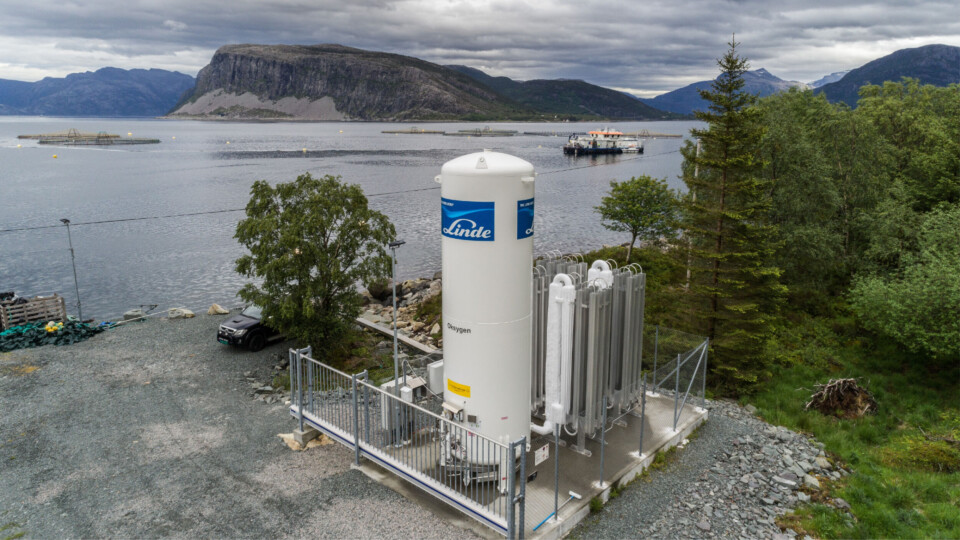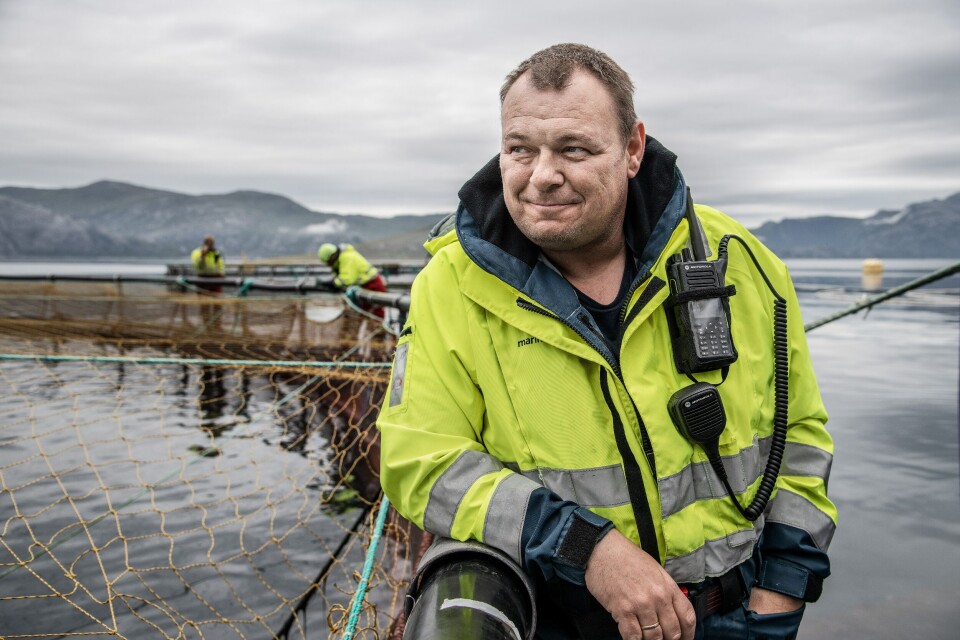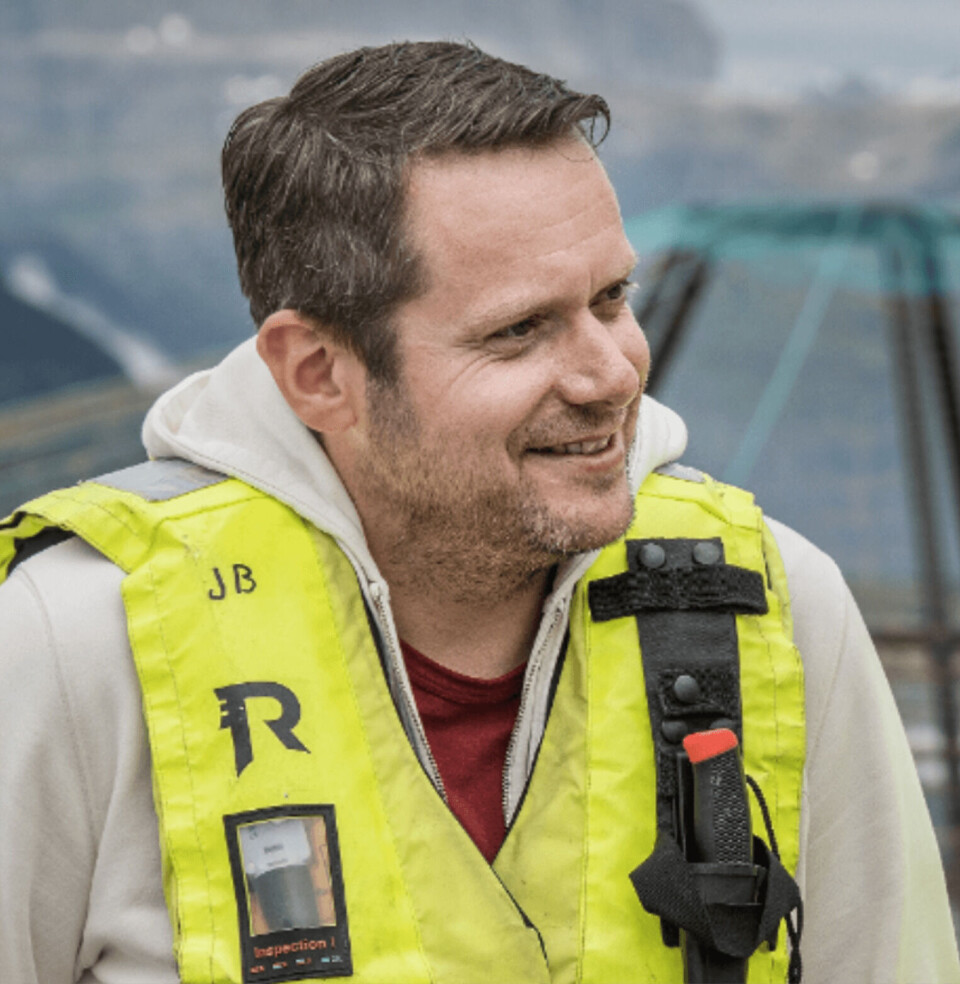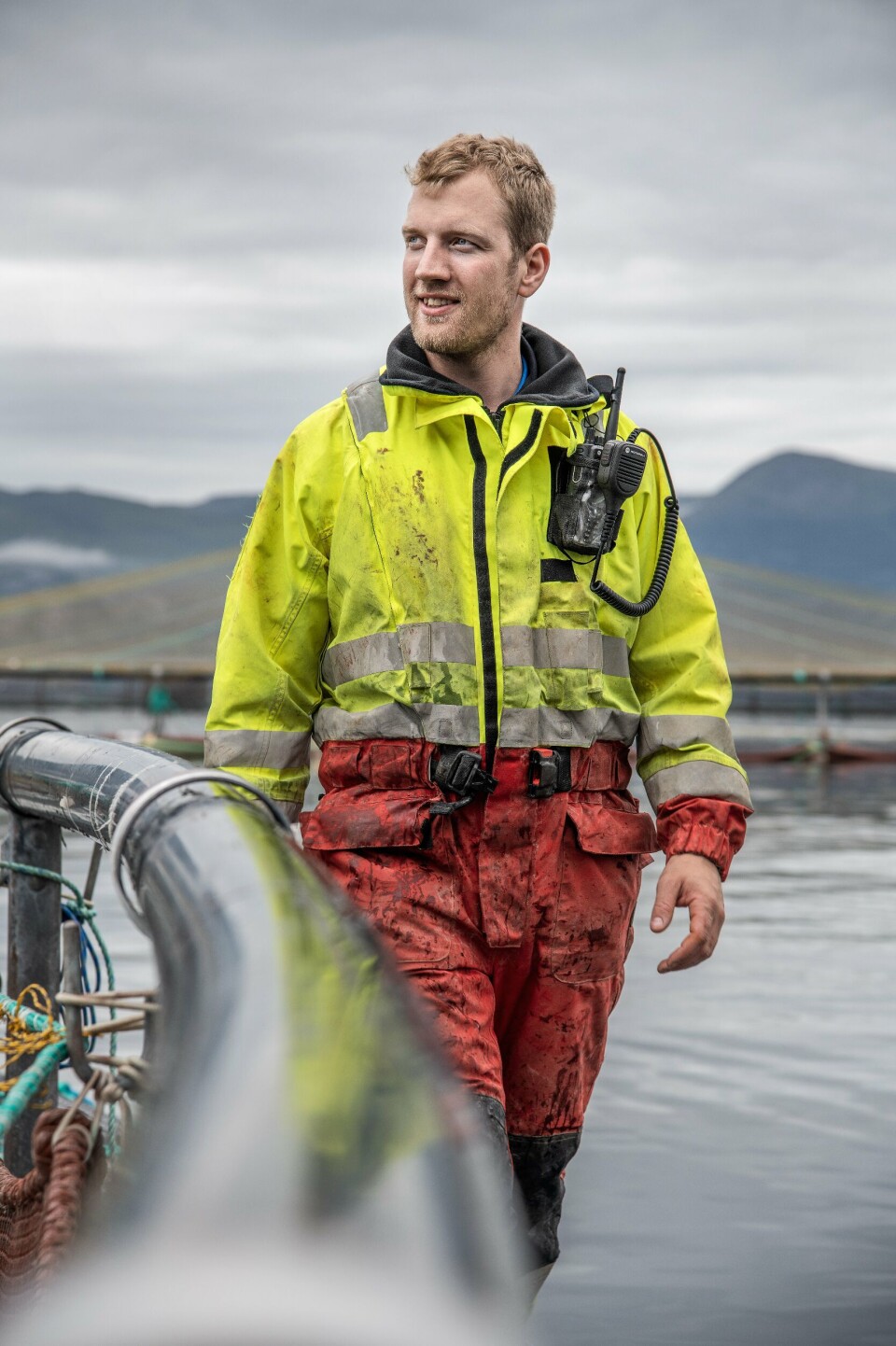
Lice skirts and oxygen optimising fish growth
A combination of lice skirts and the addition of pure oxygen to cages is helping optimise fish welfare and growth at a test site in Norway.
Mowi is collaborating with lice skirt maker Plany AS and Norway’s biggest oxygen supplier, AGA, at the salmon farmer’s Gulestø farm in Sogn og Fjordane county since 2017.
The theory is that hindering and reducing lice infestations while maintaining the desired oxygen saturation in the cages will improve fish welfare through fewer delousing sessions, lower mortality and better feed utilisation – leading in turn to increased growth, shorter production time in sea and reduced production costs.

‘Faith in the concept’
“We’ve so far lacked solid facts, and until we have them no conclusions can be drawn,” said Bjørnar Aga Larsen, operations manager at Gulestø.
“I’d nevertheless say that I have faith in the concept, and that it can help to optimise the cage environment, improve fish welfare and enhance growth conditions.
“This R&D project is supported by Innovation Norway, and we can therefore devote funds to testing it without great financial risk. If costs prove lower than the gain, it could obviously be appropriate to continue the commitment.”
After three years of research the concept is now being tested with a new generation of fish for comparison and further documentation.

New generation of fish
After three years of research the concept is now being tested with a new generation of fish for comparison and further documentation.
The combined lice skirt and oxygen combination, which Plany calls Oxyshield, uses AGA’s SOLVOX DropIn solution designed to oxygenate large volumes of water in enclosed and partly enclosed production units in the sea. It allows oxygen to be added effectively to the water through a low-pressure solution involving microbubbles.
“With Oxyshield and precision oxygenation, the fish farmer won’t be wasting resources,” said AGA project manager John Bertil Aakernes. “In other words, the microbubbles will not drift away sideways by the current or rise to the air and pop, but make the oxygen available to the fish before reaching the surface.”
Results so far show that Oxyshield can be used throughout the production cycle and thereby help to reduce number of delousing sessions. That saves costs for the fish farmer and reduces stress on the fish.
“We see that Oxyshield has an effect, but we’re still not sure how great this is,” said Larsen. “If it can help us to keep the lice skirts in place as long as possible, it’s all to the good.”

Hungrier salmon
“We see a gain with feeding,” said Hans Kristian Tveito, deputy operations manager at Gulestø, who reports that they supply more feed to the cages which are oxygenated.
“This isn’t about components but involves an integrated concept for creating value by optimising the environment and fish welfare,” said Tor Kristian Stevik, Plany’s project manager for Oxyshield.
“Small improvements in growth can yield substantial financial gains with the volumes we’re talking about here.
“Imagine a farm with eight cages and the volume of fish in each of these. Increasing annual growth by just one per cent while cutting mortality by the same percentage through fewer delousing sessions could add up to a substantial rise in revenue and an increased bottom line, and not least to better fish health.”
Biomass cameras
Stevik said biomass cameras had now been installed in the Gulestø cages to monitor growth for each fish. These trials are conducted in both cages with and without supplementary oxygen.
“In cooperation with AGA and Mowi, we envisage further developments with data capture and optimisation, and eventually with artificial intelligence (AI) and machine learning, where we can constantly monitor the environment and tailor measures as required. Variations in the natural oxygen level, temperature, alga blooms and other conditions reveal the room for manoeuvre,” said Steivik.
“This is the best documented and most extensive development project with precision oxygenation of fish-farm cages to date,” said AGA’s Aakernes.
“We’re able to compare the effects in cages with and without supplementary oxygen and, in addition to sharing data across the companies, we can apply resources from all the partners as and when required.”























































